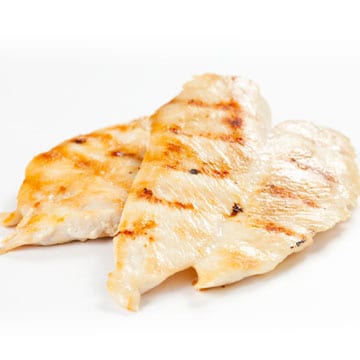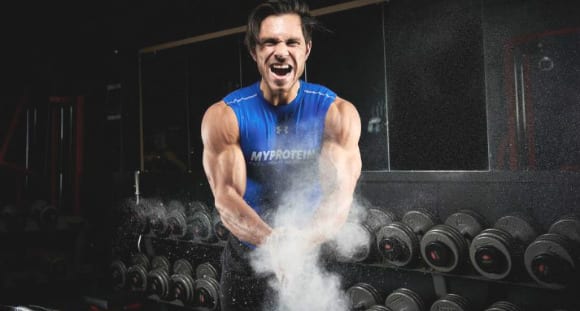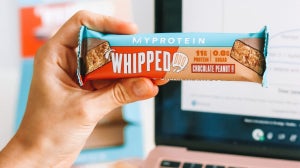{ "@context": "https://schema.org", "@type": "FAQPage", "mainEntity": [ { "@type": "Question", "name": "What is high volume training? ", "acceptedAnswer": { "@type": "Answer", "text": "High volume training is a strategy that uses high reps to increase muscle endurance and strength." } }, { "@type": "Question", "name": "Does high volume training build mass?", "acceptedAnswer": { "@type": "Answer", "text": "High volume training does build mass when your body is fuelled properly to help your muscles recover and build." } }, { "@type": "Question", "name": "Is high volume training good?", "acceptedAnswer": { "@type": "Answer", "text": "High volume training is good for increasing stamina and challenging your muscles without a heavy load. It's best to alternate forms of training based on your goals." } }, { "@type": "Question", "name": "Does high volume training build strength?", "acceptedAnswer": { "@type": "Answer", "text": "High volume training builds strength by using lower weights for more reps." } }, { "@type": "Question", "name": "How many reps is considered high volume?", "acceptedAnswer": { "@type": "Answer", "text": "Often high volume is defined as more than 10 reps. Based on the exercise and weight you might do 12 or 15 reps." } } ] }
Volume training depending on the level is used by athletes and bodybuilders alike, albeit using different structures in terms of the programmes they follow. A high volume programme is to allow the trainee to both increase muscle and lose fat, as well as adapt to a high lactic acid threshold.
The build up in lactic acid in the muscle cell is created by a limited level of oxygen going to the muscle cell due to the demand of high exertion in energy through a high volume workout. The working muscles generate energy anaerobically. This energy comes from glucose through a process called glycolysis, in which glucose is broken down or metabolised into a substance called pyruvate through a series of steps. When the body has plenty of oxygen, pyruvate is shuttled to an aerobic pathway to be further broken down for more energy. But when oxygen is limited, the body temporarily converts pyruvate into a substance called lactate, which allows glucose breakdown--and thus energy production--to continue. The working muscle cells can continue this type of anaerobic energy production at high rates for one to three minutes, during which time lactate can accumulate to high levels.

When you are training for sporting purposes it is advised that high volume workouts that do create high lactic acid build up, are used in the off season due to the muscle soreness it creates, while you are not performing your sport competitively this is a very effective way in which to train. Obviously throughout the season you should look to reduce risk of injury by intelligent strength and injury prevention sessions.
However, if your goal is to lose body fat and gain muscle mass, a high volume training plan could be utilised effectively every 4-6 weeks depending on how well you adapt to your plan. Due to risks such as repetitive strain injury and joint pain, as well as when you follow the same plan for a prolonged period of time it becomes ineffective, you should not continually do a high volume programme for 52 weeks of the year. To make your plan effective, you could complete a 4-week VERY HIGH VOLUME PROGRAMME, followed by a de-load week were you can increase the weight, decrease the reps and sets and increase the rest in your workout, as well as decrease the frequency of your training throughout that particular week. Adding in recreational activities such as long walks, massage, yoga and pilates are also advised in this week due to their ability to decrease the cortisol exposure on the body. Following this week, a phase of strength based training can be used for around 4 weeks for you to then work your way back into a high volume plan.
Your diet should also compliment a high volume training plan, due to glucose being depleted throughout the workout, using post workout carbohydrates are advised due to their ability to help recovery and replenishment.
For example, using maltodextrin or dextrose in your whey protein shake immediately post workout and around an hour later using a source of carbohydrates in a meal i.e. Chicken Breast with Sweet Potato and Mixed Veggies.

4 Week High Volume Training Plan

This phase will consist of 3 consecutive training sessions followed by 1 rest day. The 3 sessions will include one chest and back session, one legs session and one shoulders and arms session.
Your rest day should include recreational activities such as long walks, massage, yoga, swimming, heat treatments or pilates.
Training Frequency
Day 1: Chest and Back
Day 2: Legs
Day 3: Shoulders and Arms
Day 4: REST
REPEAT
| Chest and Back | |||||
| Order | Exercise | Sets | Reps | Tempo | Rest |
| A1 | Incline Dumbbell 1 1/4 Press | 4 | 12 | 3010 | 10s |
| A2 | Wide Lat Pull Down | 4 | 12 | 3010 | 60s |
| B1 | Barbell Bench Press | 4 | 15 | 2020 | 10s |
| B2 | Low Seated Row | 4 | 15 | 2020 | 60s |
| C1 | Incline Cable Flies | 4 | 20 | 2010 | 10s |
| C2 | T Bar Row w/pause squeezing scapulae at Rep 10 for 10s | 4 | 20 | 2010 | 60s |
| D | Machine Chest Press | 1 | Drop Set | 3010 | x |
| Legs | |||||
| Order | Exercise | Sets | Reps | Tempo | Rest |
| A1 | Barbell Heels Elevated Hack Squat | 4 | 12 | 3010 | 10s |
| A2 | Lying Leg Curl | 4 | 12 | 3010 | 60s |
| B1 | Barbell Hip Bridge | 4 | 15 | 2020 | 10s |
| B2 | Long Range Barbell Walking Lunge | 4 | 15 | 2020 | 60s |
| C1 | Dumbbell Heels Elevated Squat | 4 | 20 | 2010 | 10s |
| C2 | Leg Press | 4 | 20 | 2010 | 60s |
| D | Leg Extension | 1 | Drop Set | 3010 | x |
| Shoulders and Arms | |||||
| Order | Exercise | Sets | Reps | Tempo | Rest |
| A1 | Seated Barbell Shoulder Press | 4 | 12 | 3010 | 10s |
| A2 | Close Grip Barbell Press | 4 | 12 | 3010 | 60s |
| B1 | EZ Bar Preacher Curl | 4 | 15 | 2020 | 10s |
| B2 | Seated Dumbbell Lateral Raise | 4 | 15 | 2020 | 60s |
| C1 | Reverse Shoulder Press | 4 | 20 | 2010 | 10s |
| C2 | Duel Rope Extension | 4 | 20 | 2010 | 60s |
| D | Cable Preacher Curl | 1 | Drop Set | 3010 | x |
FAQ
What is high volume training?
High volume training is a strategy that uses high reps to increase muscle endurance and strength.Does high volume training build mass?
High volume training does build mass when your body is fuelled properly to help your muscles recover and build.Is high volume training good?
High volume training is good for increasing stamina and challenging your muscles without a heavy load. It's best to alternate forms of training based on your goals.Does high volume training build strength?
High volume training builds strength by using lower weights for more reps.How many reps is considered high volume?
Often high volume is defined as more than 10 reps. Based on the exercise and weight you might do 12 or 15 reps.
For more tips on training, nutrition and supplements contact Jamie Bantleman at jbantlemanfitness@gmail.com and visit Facebook - Jamie Bantleman - Body Transformation Specialist







